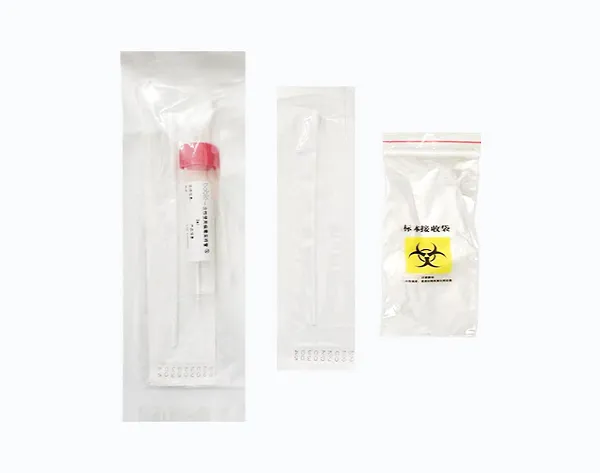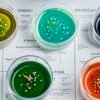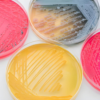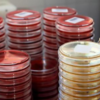
In clinical diagnostics, accurate and timely detection of pathogens is crucial for effective patient care. One often-overlooked but essential component of the diagnostic process is the use of transport swabs. These specialized swabs are designed to collect, preserve, and transport clinical samples—such as saliva, nasal swabs, throat swabs, and other specimen types—from patients to laboratory facilities. Without transport swabs, the reliability of test results can be compromised, leading to incorrect diagnoses and potentially delayed treatment.
This article explores the significance of transport swabs in clinical testing, explaining how they ensure sample integrity, maintain microbial viability, and contribute to the overall accuracy of diagnostic procedures.

1. Preserving Sample Integrity for Accurate Results
One of the primary functions of transport swabs is to preserve the integrity of the sample during transport from the clinical setting to the laboratory. When a sample is collected from a patient, it often contains bacteria, viruses, or other pathogens that need to be preserved for accurate testing. Without the proper preservation, these pathogens may degrade, rendering the sample unusable or skewing the results.
Transport swabs are typically made from materials that do not interfere with the sample, such as nylon or polyester. These materials are chosen for their ability to absorb and retain biological samples without contamination or degradation of the pathogens.
Moreover, the transport medium, which is often a special buffer solution, plays a vital role in stabilizing the sample. It ensures that the sample remains viable for the duration of the transport process, which can range from several hours to days depending on the distance between the clinic and the laboratory.
2. Ensuring Viability of Microorganisms
In clinical microbiology, it’s crucial to maintain the viability of microorganisms in a sample to accurately identify them. Some pathogens, especially viruses or fastidious bacteria, require specific environmental conditions to survive during transport. Transport swabs are designed to maintain these conditions, ensuring that the microorganisms in the sample remain viable until they reach the laboratory for further analysis.
Swabs with specialized transport media, such as Viral Transport Media (VTM) for viruses or Stuart’s transport medium for bacteria, are commonly used. These media provide the necessary nutrients and buffer to maintain pathogen survival, allowing for optimal conditions to facilitate culture growth and pathogen identification.
3. Enabling Timely Diagnostics
Speed is of the essence in many clinical tests, especially when it comes to detecting infectious diseases. Transport swabs help ensure that samples are transported efficiently and that diagnostic testing can begin without delay. This is especially important for time-sensitive infections, such as respiratory diseases, sexually transmitted infections (STIs), and foodborne illnesses, where timely intervention can make a significant difference in patient outcomes.
By using transport swabs, healthcare providers can ensure that they meet the time windows required for accurate testing and prevent the degradation of potentially infectious agents that could delay the diagnosis and treatment process.
4. Standardizing Sample Collection and Transport
The use of standardized transport swabs ensures consistency across different clinical settings. Whether the sample is collected in a hospital, clinic, or by home healthcare workers, transport swabs provide a uniform method of sample collection, preservation, and transportation. This standardization reduces variability in testing results, which is crucial for reliable diagnosis and patient management.
In addition, transport swabs are available in various forms, including swabs for throat, nasal, wound, and eye samples, ensuring that every type of sample can be correctly preserved and transported for testing.
5. Compliance with Regulatory Standards
Clinical laboratories and healthcare facilities must adhere to strict guidelines and regulations set forth by authorities such as the World Health Organization (WHO), Centers for Disease Control and Prevention (CDC), and the Food and Drug Administration (FDA). Transport swabs are an integral part of meeting these standards, ensuring that clinical samples are handled in a way that preserves both the safety of laboratory personnel and the integrity of the sample.
By using high-quality transport swabs that meet regulatory standards, healthcare providers can ensure compliance with best practices in microbiological testing.
Conclusion: A Key Element in Clinical Testing Success
Transport swabs play a pivotal role in clinical diagnostics by ensuring that samples are preserved, pathogens remain viable, and diagnostic testing can proceed without delay. These simple yet critical tools are designed to maintain the integrity of the sample during transport, helping laboratories provide accurate, timely, and reliable results for patient care. The proper use of transport swabs ultimately supports better clinical outcomes and enhances the efficiency of healthcare delivery.
For optimal sample collection, transportation, and testing, it’s essential to choose high-quality transport swabs tailored to the specific diagnostic requirements of the test being performed. Investing in the right transport swab ensures that clinical testing delivers the most accurate and actionable results possible. visit our [virus-transport-medium and transport-swab] for more related products
Recent Posts
- Choosing the Right Conventional Culture Medium: A Comprehensive Guide for Lab Excellence
- Why Sterile Transport Bags Are Critical for Reliable Microbial Testing Results
- Understanding Culture Media Series: Types and Uses in Laboratory Settings
- Transport Culture Media: The Key to Reliable Laboratory Sample Analysis
- Ensuring Lab Sterility: The Critical Role of Sterile Tubes and Bags



